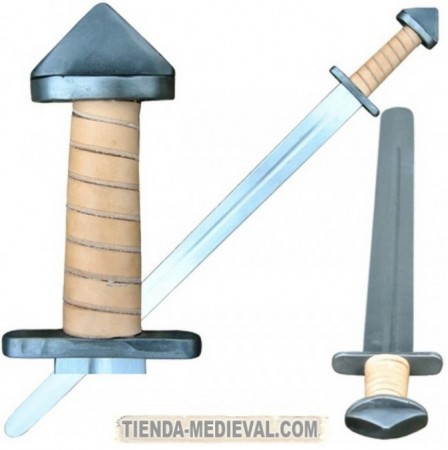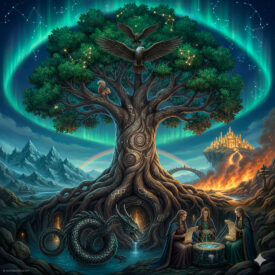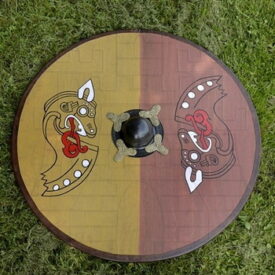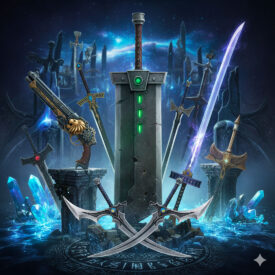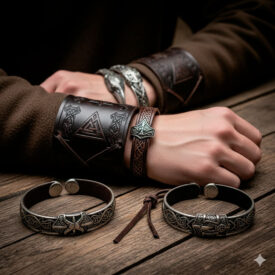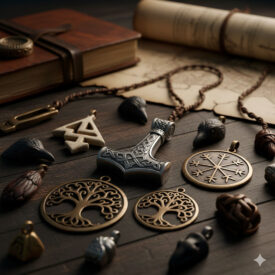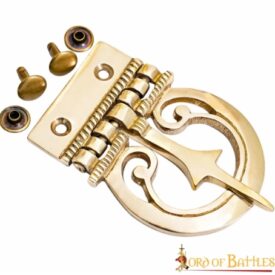Why Viking Swords Continue to Fascinate
The Viking swords hold a prominent place in history, mythology, and popular culture. They were not only weapons of combat but symbols of prestige, family heritage, and power. Even today, these Norse swords raise questions: how were they made? What differentiates them from other medieval swords? And how to choose a replica or a functional piece for collection?
In this article, you will learn about the origin, technical characteristics, types of Viking swords, how they were used in battle and ceremonies, and what you should consider if you want to buy an authentic replica in our online store.
Historical Origin and Context
The so-called Norse swords, commonly labeled as Viking swords due to their use by Scandinavian peoples of the Viking Age (approx. 793-1066 AD), come from a broader Germanic tradition. The Vikings were peoples originating from Scandinavia who carried out raids, explorations, and settlements throughout much of Europe. The popular image of Vikings—blond, tall, horned helmets—is largely a myth; horned helmets were not practical in battle, and there is no archaeological evidence to support them for actual combat.
In historical sources and archaeological remains, a tradition of fine and well-crafted weapons appears. Swords were expensive pieces and often gifts from high leaders or symbols of lineage. Their use was not limited to combat: they also had ritual and social value.
Impact in Europe
The Vikings influenced the politics and demography of Europe: in the British Isles, in Normandy, and beyond. Their incursions contributed to the period of instability that characterized the early Middle Ages in Europe, in which regions with weak power structures were vulnerable to rapid attacks by sea and rivers.
Parts and Anatomy of Viking Swords
Viking swords have a simple and effective structure, inheriting from the continental tradition: blade, guard (or cross), hilt, and pommel. Each element was designed with both functionality and aesthetics in mind.
- Blade: typically double-edged, with a symmetrical profile and a rounded or sharp tip depending on the era and purpose (cutting vs. thrusting).
- Guard: short and straight, it protected the hand and served as a balance element.
- Hilt: made of wood, bone, or materials decorated with inlays; its length allowed for a firm grip, sometimes for two hands on long models.
- Pommel: heavy and ornate; in many cases, the pommel served to balance the blade and as a seal of authorship or clan.
Materials and Forging
The best original Viking swords are made of forged steel, and many feature pattern welding (Damascus steel or pattern-forged steel), a technique that joined strips of different carbon steel to create a strong blade with a visible pattern. This technique provided a good combination of hardness and flexibility: an edge capable of cutting but with a tip that would not break on impact.
There are also simpler swords made with homogeneous steel. The choice of material influenced the price and status of the weapon.
Types of Viking Swords and Their Evolution
Although “the Viking sword” is often spoken of as if it were a single type, there were important variations:
- Type X Sword (8th–9th centuries): wide blade, short hilt, and pronounced pommel. Effective for cutting and blunt in clashes.
- Type Y Sword (9th–11th centuries): more stylized blade, better balance for thrusts; transition to forms that would influence the medieval sword.
- Ceremonial Swords: decorated with gold, silver, or jewel inlays, less intended for battle and more as symbols of prestige.
How They Were Used in Combat
Viking swords were elite weapons: while lower-status warriors used axes or spears, the sword was owned by leaders and free men with resources. Their tactical use combined broad cuts with blows aimed at unprotected points.
Norse combat also involved the use of round shields, which complemented the sword with defensive and offensive maneuvers. The sword was used to break formations, attack enemy leaders, and in personal combat where individual skill made the difference.
Social and Symbolic Significance
Beyond their practical function, swords had a strong symbolic load: they could be inherited from generation to generation, engraved with runes, and associated with oaths or pacts. Losing a sword in battle not only meant losing the weapon but also honor.
Conservation and Archaeological Finds
Archaeology has recovered numerous Norse swords, many found in tombs or votive deposits. The conservation of these pieces depends on the burial conditions; some have arrived in good condition, showing decoration and smith’s marks.
These finds allow tracing forging techniques, trade routes (through the origin of metals), and the diffusion of styles among communities.
How to Identify an Authentic Replica of Viking Swords
If you want to buy a replica or a functional sword, consider:
- Material: look for suitable steel, not fragile alloys or soft metals that wear out easily.
- Forging: if pattern-welded is advertised, request detailed photos to see the authentic pattern.
- Finish: hilts must be well assembled; the pommel and guard must not be loose.
- Provenance: in our online store, we guarantee origin and quality; always review the technical description and specifications.
Practical Comparison: Collector Replicas and Functional Swords
| Type | Typical Material | Recommended Use | Indicative Price |
|---|---|---|---|
| Decorative Replica | Low Carbon Steel / Alloys | Exhibition, Ornamentation | Low to Medium |
| Functional Replica (Practice) | Carbon Steel or Damascus | Training, Historical Reenactment | Medium to High |
| Archaeological Reproduction | Traditional Forged Steel | Collection, Museum Work | High |
Basic Care and Maintenance
To preserve a Viking sword (replica or functional):
- Clean the blade after use with a dry cloth and apply a light layer of oil to prevent oxidation.
- Periodically check the assembly of the pommel and guard; tighten if necessary.
- Avoid striking against metal parts that could deform the blade or break the edge.
Viking Swords in Popular Culture and Collecting
Cinema, series, and video games have propelled Viking aesthetics, but often mix eras and styles. For the serious collector, it is key to distinguish between faithful historical reproductions and designs inspired by fiction.
If you are looking for a piece for display or for historical practice, in our online store, we offer differentiated ranges for each need, with clear specifications and high-resolution photographs.
How to Choose According to Use: Practical Guide
- Decoration: look for polished finishes and ornamental details; edge durability is secondary.
- Historical Reenactment: prioritize historical fidelity, length, weight, and materials.
- Training/Recreational Combat: choose swords with adequately hardened blades and safety guarantees.
Viking swords continue to be objects of study and desire. Their mix of functionality, aesthetics, and symbolism makes them essential pieces for historians, reenactors, and collectors.
If you want to buy a Viking sword, remember that in our online store, you will find options for all uses: from decorative replicas to functional swords suitable for historical reenactment and training. Review the specifications, detailed photos, and guarantees we offer.





